
Return of the Portuguese GP. Is it a placeholder for another F1 street track?
Formula 1's two-year return to Portimao may be less a long-term endorsement than a holding pattern, as the championship keeps calendar space open for future street races
Mercedes comes to this weekend’s Canadian Grand Prix with an engine upgrade and total domination of the championship – but claims that Ferrari could win the race. Is it serious?
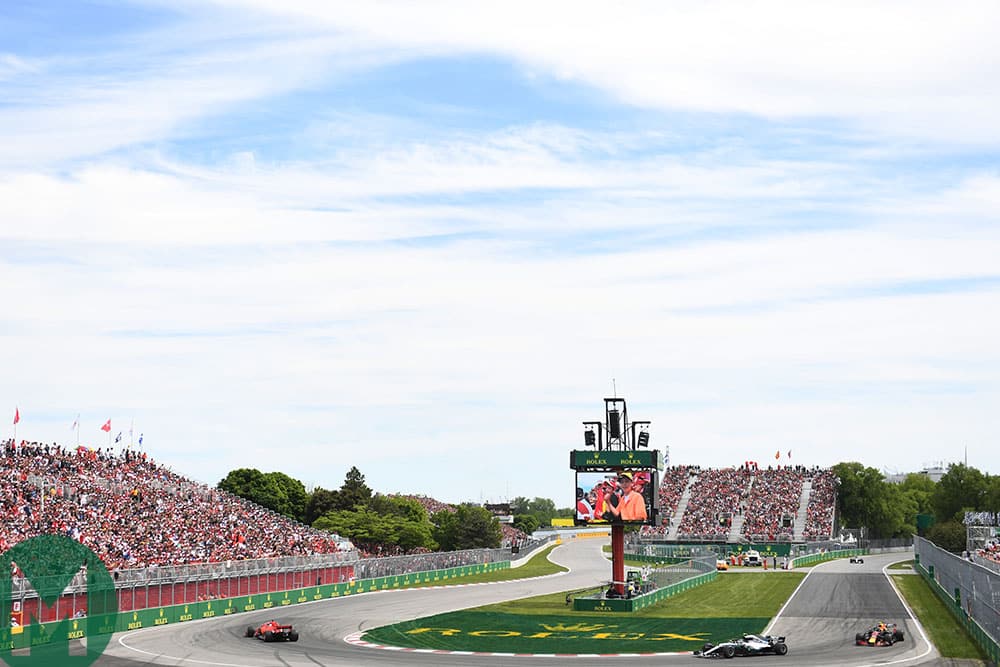
Photo: Motorsport Images
The formbook says one thing. The dominant team says the other. That means one of two things is happening: either the team in question is desperately trying to play down its advantage to try and keep things interesting, or it is genuinely worried about something.
Mercedes headed into this weekend’s Canadian Grand Prix near untouchable on paper, and with a foreboding upgrade in the wings threatening to put the Silver Arrows even further in the distance, it didn’t appear Mercedes has much to worry about at the moment.
Yet, ask Toto Wolff and you basically get ‘the track could suit Ferrari though…’. But let’s not forget, Spain was supposed to suit Ferrari. And Australia, and Bahrain… and so on. And look how they all went.
The simple fact is, there’s a large indicator to suggest that Mercedes could actually be untouchable in Montreal, and it comes from the engine bay of the W10. While Honda, Ferrari and Renault have all so far rolled out their first engine upgrade packages this year – Honda and Ferrari both moved theirs forward in search of extra pace, which worked in both cases, and Renault brought its forward to try and ensure its cars actually remained working for an entire race distance – Mercedes hasn’t so much as touched its all-conquering powertrain. Until now.
The first power-focused upgrade has arrived in Montreal. And that’s bad news for the rest of the grid as it comes off the back of Mercedes’ perfect run of six wins from six races, with both Lewis Hamilton and Valtteri Bottas on the podium at each round so far. Mercedes’ dominance has been such that Hamilton alone is within two points of matching the Ferrari team’s entire points haul. All that with no additional engine grunt to speak of so far.
However, the first two practice sessions suggest that Wolff’s concerns could be valid, as Leclerc topped the time sheets, followed by Vettel, after their qualifying simulations. Hamilton was down in sixth after crashing into the wall. This could well be a hard-fought race weekend.
Get the full story from this weekend’s Spanish Grand Prix: sign up for Mark Hughes’ in-depth race report
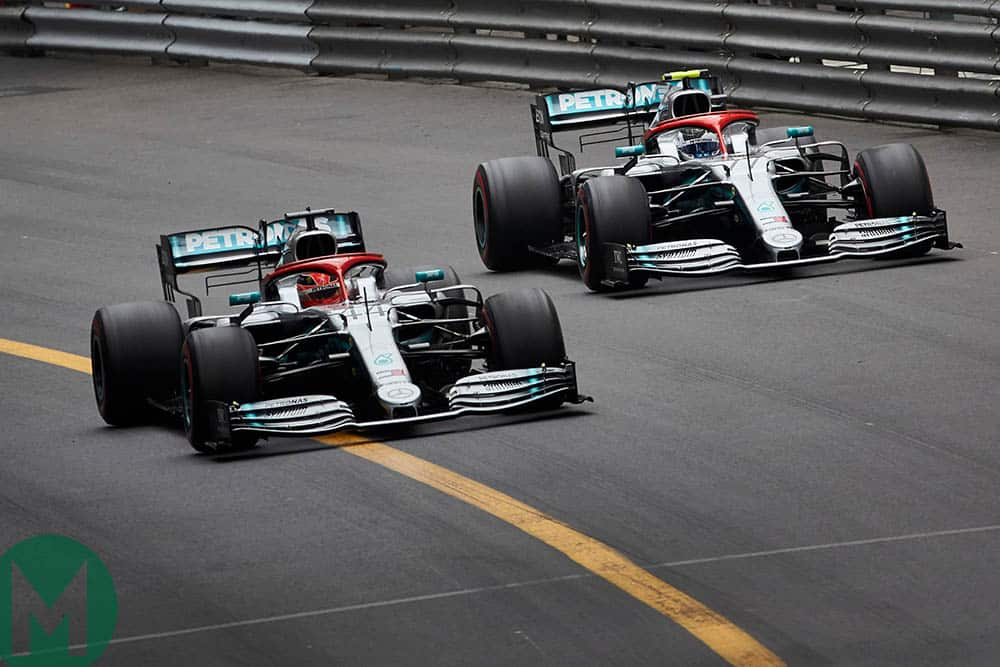
Mercedes is looking to secure its season domination with an engine upgrade in Canada Photo: Motorsport Images
Quite what Mercedes’ upgrade entails is unsurprisingly top secret and known only to the wizards at Brackley. But Hamilton gave us a clue after Monaco, saying: “A lot of analysis will be made, particularly toward trying to understand the tyres better. And on my side I’m trying to work even better with my engineers to try and extract more from my car.
“A lot of the engineers are trying to extract more information from the energy recovery system, and positioning the information in the right way, so I can deliver more from this car. And I know the guys back at the factory are working on developments. We will probably have a new engine by the next race, so the car will move forward as well.”
Of course, any potential change brings risk to upsetting the balance, but Mercedes traditionally has bucked that trend. It delayed its engine update last season when it was concerned about a “quality issue” of its new-spec engine. Up until that point, the Silver Arrows had won just twice from the opening six rounds. The spec-two engine arrived for France, and Hamilton won three of the next five. Spec three came in from Belgium, and Hamilton went on a spree during the final stage of the campaign – winning six of the last nine. According to form, Mercedes doesn’t really do dodgy upgrades.
It’s got to be worrying for its rivals, and isn’t helped by the fact the W10 should also suit the characteristics of the Circuit Gilles Villenueve. It’s billed as a street circuit, but behaves more like a permanent course due to its high-speed, power-hungry nature. Cars break the 300kph barrier three times per lap thanks to three long straights, and the brakes take a hammering too with several big stops. Having a car with strong energy recovery abilities (Mercedes), a stable chassis that likes both high- and low-speed turns (Mercedes) and efficient downforce versus drag numbers (Mercedes… again) is key.
But Wolff remains sceptical about his team’s chances against Ferrari, playing down expectations by saying: “Canada is the seventh race of the season and we are beginning to see more clearly the strengths and weaknesses of our car. In the past six races, we were very strong in the corners but lost time on the straights. This will make Canada a huge challenge for us as the track characteristics could favour our opponents – there are many long straights, and fewer corners in which to make up lap time.”

Ferrari could repeat last year’s victory in Canada Photo: Motorsport Images
Surely Canada should be a happy weekend for Ferrari? Well, it could be, as long as it remembers how to be a race team again after a string of laughable strategic hiccups in recent weekends.
The SF90 has prodigious straight-line pace, which is just about its only stat Mercedes couldn’t match thus far. Canada’s power and traction-dependence should favour Ferrari, but the car’s comparatively sluggish nature through medium and slow-speed corners will be a hindrance.
In this month’s Motor Sport magazine, Mark Hughes, Grand Prix editor, highlights Montreal as one of just three remaining circuits that might suit the Ferrari.
Team head Mattia Binotto has warned that, while the team will continue its search for downforce, finding a big breakthrough quickly is unlikely. “We know we’re not competitive enough right now and, for the time being, we haven’t got any more changes coming on the car that will have a significant effect on the problems we have encountered since the start of the season,” he said. “I don’t think that there will be any magic solution in Canada. But Montreal is a different track, different configuration, different compounds, different set-up…”
Ferrari ultimately doesn’t generate enough downforce to really switch the tyres on in race conditions. I’d expect the red contingent to fare better in qualifying, provided it doesn’t send Charles Leclerc for an early lunch again, like it did in Monaco…
More
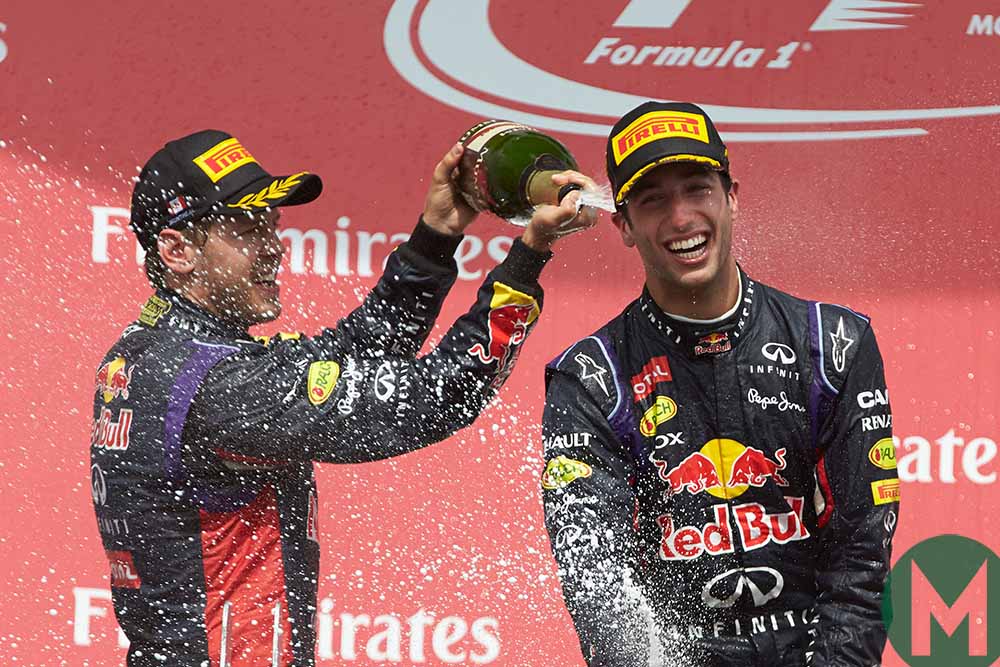
Red Bull has a history of success in Montreal —just not in recent years Photo: Motorsport Images
Red Bull has enjoyed success in Canada, winning in 2013 (Vettel) and 2014 (Ricciardo). The RB15’s strong point will be through the fast first and second sectors. While Honda has made great progress with its power unit, it still can’t quite match the outright grunt on the straights of its two main rivals.
Saying that, the Red Bull appears to wear its tyres well so could recoup what it loses in a straight line over the course of a likely more consistent stint. Plus, it’s got a Max Verstappen, which has perhaps been its biggest strength so far this year.
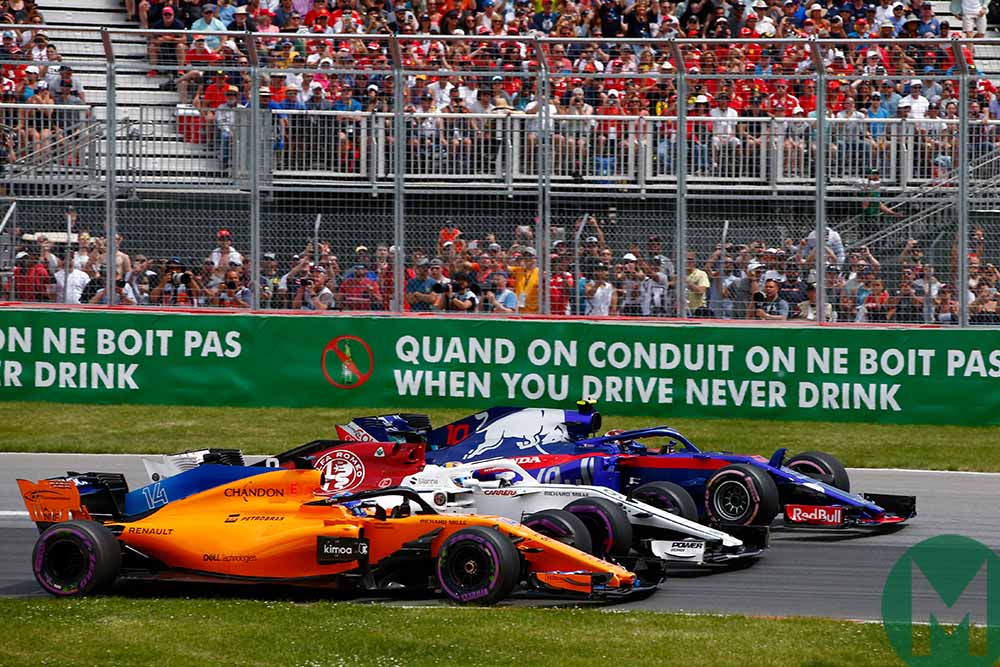
The midfield battle promises to be close in Canada Photo: Motorsport Images
McLaren should have high hopes after a strong weekend in Monaco during which Carlos Sainz finished sixth and best of the Class B brigade. The team ran strongly in Australia – a circuit not dissimilar to Canada in nature. Team boss Zak Brown has also been pleased with the completed restructuring of the technical staff – with ex-Toro Rosso man James Key installed as technical director and former Porsche boss Andreas Seidl as team principal. Brown said: “Teamwork [has been a key area of progress]. Pitstops are really strong and we’ve had some technical advancement there. Everybody’s motivated and working really well together. Look at Mercedes, yes they’ve got a great budget, but they’re phenomenally well run. They don’t seem to have bad weekends. That’s a great racing team. That’s what I’m starting to see here.”
There will be a lot of pressure and focus on the Racing Point garage, with the struggling Lance Stroll back on home turf. Having not managed to get out of Q1 thus far this season – or for the last 10 races in fact, even if four were in a Williams… – Stroll really needs to impress, especially with his billionaire father and multiple sponsors likely to be watching on. Sergio Perez has been handy in Canada in the past, having finished on the podium there in a Sauber in 2012 and fifth in a 2017 Force India.
Renault has been a consistent points-scorer in Canada, with both cars in the top 10 there last term, but this year has been a bit of a struggle so far with the team beset by reliability issues. Daniel Ricciardo scored points for just the second time this year with a ninth in Monaco, while Nico Hülkenberg is enduring a bit of a slump, having been point-less since the season-opener in Australia. Regardless the team has been drip-feeding aero upgrades after clearing much of its engine issues. It plans to closer to a B-spec car in time for the French GP.
Both Haas drivers remain confident that the American team still leads the way in the midfield pack, despite a troubled Monaco GP. Kevin Magnussen qualified sixth in Monte Carlo but finished outside of the points. “We’ve got the fastest car in the midfield,” he said. “But race-pace is the defining factor and we need to focus on that.” Haas is still struggling to get to grips with Pirelli’s new thinner gauge tyres for this year, but its hand-me-down Ferrari is still a well-rounded package. Haas ran the new-spec Ferrari engine in Monaco – a place that didn’t really show it off. “It’s tough to know what your engine is doing in Monaco, or what the power difference is,” added Romain Grosjean. “I’m looking forward to driving in Canada with the long straights. I believe it’s a good step, and that should be clear in Montreal.”
Toro Rosso scored its first double points finish of the year in Monaco, and should go well in Montreal according to Daniil Kvyat, who has been in Q3 during each of the last three GP weekends. “We can look forward to Canada because of the way things have been going recently,” he says. “Our car was competitive in both Spain and Monaco, which are two very different tracks so it’s good for the future that we can perform on a variety of circuits.”
Alexander Albon will make his debut at the Circuit Gilles Villenueve but has been racking up the hours in the simulator to acclimatise. “It seems like a real drivers’ track where you ‘play’ with the walls. Every drivers loves that…”
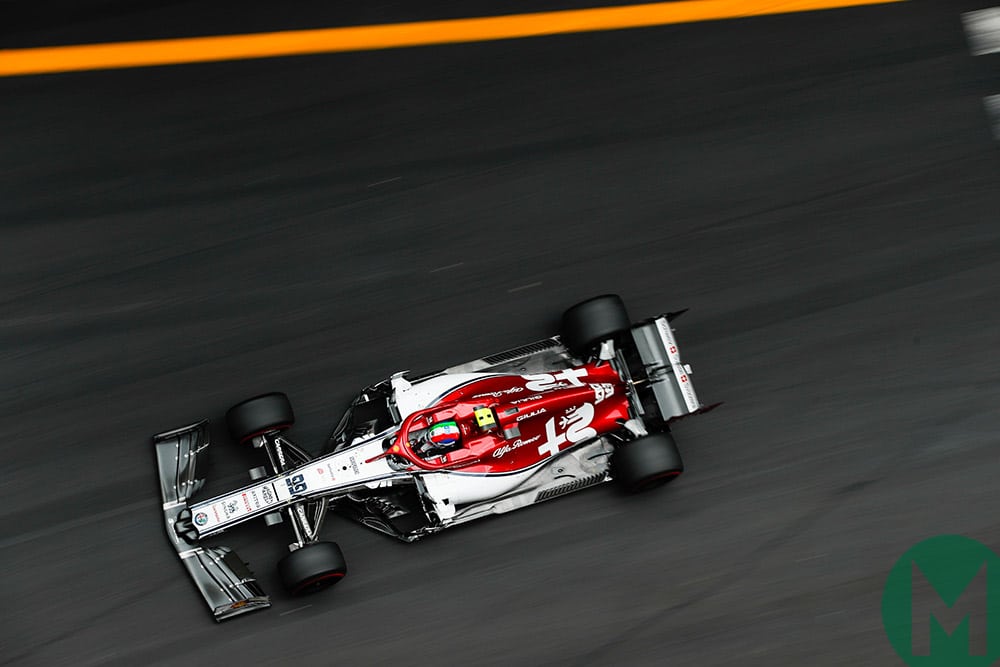
Alfa Romeo could reverse its recent form, thanks to the high-speed sections in Canada Photo: Motorsport Images
Alfa Romeo could use with an upswing in form. Having scored in each of the opening four races, Kimi Räikkönen has been pointless for the last two, with his main contribution in Monaco being some typical Kimi radio gold when he was baulked by a Racing Point, or Force India, “or whatever the f*** it’s called”. The Alfa has gone well on higher-speed tracks, so Kimi could become a factor. Antonio Giovinazzi is the only driver not in a Williams that’s yet to register a point.
Monaco may have been another tough one for Williams – haven’t they all been so far? – but the team can take solace from the fact that George Russell clung on to the back of the midfield battle for much of the race. There’s been some real improvement from the team since the Spanish GP as its efforts to catch up the rest of the pack begin to bear fruit. Team head Claire Williams has promised a raft of upgrades sooner rather than later, saying: “There’s a lot of good work going on back at the factory that people may not necessarily be seeing yet.”
“The aero team are doing a great job finding performance in the tunnel and we’re going to be bringing that to races over the coming weeks and months with a package coming mid-way through the season that we will hope will bring some significant performance to us.”
New bits will almost certainly arrive for Canada, but don’t expect miracles.
| Position | Driver | Team | Points |
| 1 | Lewis Hamilton | Mercedes | 137 |
| 2 | Valtteri Bottas | Mercedes | 120 |
| 3 | Sebastian Vettel | Ferrari | 82 |
| 4 | Max Verstappen | Red Bull | 78 |
| 5 | Charles Leclerc | Ferrari | 57 |
| 6 | Pierre Gasly | Red Bull | 32 |
| 7 | Carlos Sainz | McLaren | 18 |
| 8 | Kevin Magnussen | Haas | 14 |
| 9 | Sergio Perez | Racing Point | 13 |
| 10 | Kimi Räikkönen | Alfa Romeo | 13 |
| 11 | Lando Norris | McLaren | 12 |
| 12 | Daniil Kvyat | Toro Rosso | 9 |
| 13 | Daniel Ricciardo | Renault | 8 |
| 14 | Alexander Albon | Toro Rosso | 7 |
| 15 | Nico Hulkenberg | Renault | 6 |
| 16 | Lance Stroll | Racing Point | 4 |
| 17 | Romain Grosjean | Haas | 2 |
| 18 | Antonio Giovinazzi | Alfa Romeo | 0 |
| 19 | George Russell | Williams | 0 |
| 20 | Robert Kubica | Williams | 0 |
| Position | Team | Points |
| 1 | Mercedes | 257 |
| 2 | Ferrari | 139 |
| 3 | Red Bull | 110 |
| 4 | McLaren | 30 |
| 5 | Racing Point | 17 |
| 6 | Haas | 16 |
| 7 | Toro Rosso | 16 |
| 8 | Renault | 14 |
| 9 | Alfa romeo | 13 |
| 10 | Williams | 0 |

Formula 1's two-year return to Portimao may be less a long-term endorsement than a holding pattern, as the championship keeps calendar space open for future street races

Two Australian F1 drivers who came to Europe at the same time: one became world champion, the other faded from memory. But both Alan Jones and Brian McGuire have their place in racing history

Veteran broadcaster and F1 driver Martin Brundle has picked out the contender he's been most impressed with this year

Alain Prost has given his view on Renault exiting F1 as an engine manufacturer